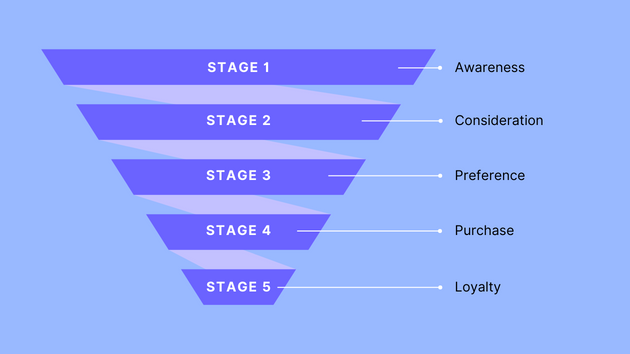Ricoh GR Digital iii vs Ricoh GR iiix Specs: Best Review 2024
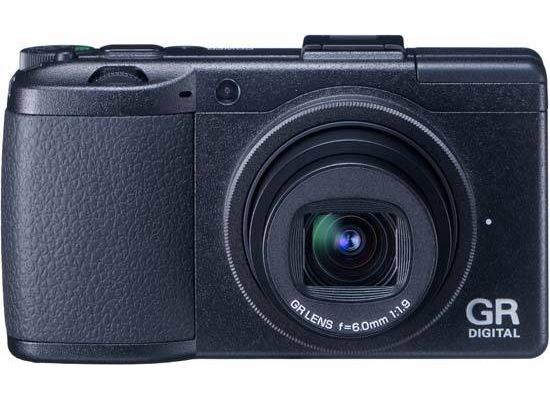
Based on my experience with the camera this year, I would consider the Ricoh Gr Digital iii to be an excellent choice for street and travel photography. During a three-week trip to Japan, I switched from the Fujifilm X100V to the Ricoh GR III and found it to be my most frequently used camera. Using it was a delightful experience.
The Ricoh GR III, despite being over four years old, retains its specifications, such as the lens, image sensor, shake reduction, and unique features like Snap Focus and a built-in ND filter. However, it’s worth noting that the absence of a built-in viewfinder may be a consideration for some photographers.
Ricoh GR iii Reviews
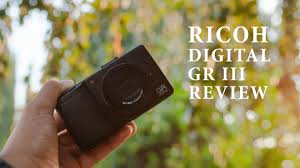
The GR Digital III is the third iteration of the popular Ricoh GR series of digicams, which draws inspiration from the acclaimed Ricoh GR-series 35mm film cameras introduced in 1996. These cameras have gained a reputation among enthusiasts and professional photographers as portable “walk-around” cameras that can easily fit in a pocket.
Ricoh has taken a conservative approach with the GR Digital III, maintaining many features and the body design from its predecessor, the GR Digital II. The sensor resolution remains at 10 megapixels, but the camera now incorporates the latest image processor chip.
The most significant changes are seen in the lens and LCD monitor. Although the focal length remains at 28mm (35mm equivalent), the lens in the GR Digital III is faster, with a maximum aperture of f/1.9 compared to f/2.4 in the GR Digital II. The camera also features a new lens drive system that enhances macro photography capabilities.
The LCD monitor has been upgraded to a larger three-inch display with a higher resolution, boasting 920,000 dots. It offers a wider viewing angle, improved color reproduction, and a surface that resists dust and fingerprints. However, similar to the GR Digital II, the GR Digital III does not include a built-in viewfinder, necessitating the purchase of an optional clip-on viewfinder or reliance on the LCD screen.
What You’ll Like
- Size and weight
- Image quality
- JPG colors
- Smartphone connectivity
- Diary Edition kit inclusions.
Ricoh Gr Digital iii stores price in the UK: Ricoh GR III | from £839 (Today)
Ricoh gr digital iii release date: Tokyo, Japan, July 27, 2009 — Ricoh Co., Ltd.
Product Description
The Ricoh GR Digital III is the successor to the GR Digital II. It features a 28mm (equivalent) f/1.9 lens and an upgraded 10MP sensor with larger pixel pitch compared to its predecessor. One notable feature is its high-resolution screen, which was one of the first among compact cameras to offer a VGA panel with 920,000 dots. The camera incorporates a new imaging engine and a more sensitive sensor, promising improved performance at high ISO settings. Additionally, it boasts faster autofocus and a ‘full-press snap’ mode that quickly jumps to a preset focus distance for fast street shooting. The GR Digital III also supports shooting bursts of up to 5 RAW files in continuous or bracketing mode.
Ricoh GR iii Specifications
The Ricoh GR iii, which was released in early 2019, is now more than four years old. Let’s take a look at the specifications of the GR III:
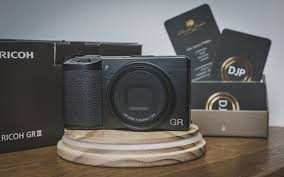
- The camera features an 18.3mm lens with an aperture range of F2.8 to F16, equivalent to approximately 28mm in full-frame terms.
- The lens consists of six elements in four groups, including three aspherical lens elements.
- It utilizes a CMOS image sensor with a resolution of approximately 24.24 megapixels.
- GR III incorporates a 3-axis sensor-shift shake reduction system.
- Similar to Ricoh’s renowned film cameras, it includes the Snap Focus feature.
- It comes with a built-in ND (neutral density) filter.
- The camera offers built-in image control simulations.
- It features a 3-inch TFT color LCD screen but does not have a built-in viewfinder.
- It includes a hot shoe for attaching external accessories, but it does not have an in-built flash.
- The camera weighs approximately 9 ounces (257 grams), including the battery and SD card.
Given that the Ricoh GR III has been available for over four years, there is speculation about whether Ricoh will release a successor to this camera and what features and specifications it might offer. Many are curious about when such a successor might be introduced and what enhancements it could bring to the table.
Battery and Memory Card
To accommodate capturing both JPGs and RAW files, it is recommended to use a 128GB or larger SD card with the Ricoh GR III since it has a single SD card slot.
Connectivity
The Ricoh GR iii offers convenient connectivity options with built-in Wi-Fi and Bluetooth. Transferring images to a smartphone is quick and effortless, typically taking 30 seconds or less to complete.
Image Quality
In certain situations, such as when capturing portraits, some users may desire a slightly longer lens than what the Ricoh GR III offers. However, there is an alternative camera, the Ricoh GR IIIx, which provides an equivalent field of view of 40mm, catering to those specific needs.
Ricoh GR III Performance
The test camera performed well in terms of capturing detailed images with natural-looking colors and modest saturation. However, Imatest analysis revealed some boosting in reds and blues, particularly in JPEG files. When converting DNG.RAW files using the DCRAW processing engine in Imatest, an excellent resolution was achieved without any corrections to image parameters. However, JPEG files fell slightly below expectations, and noticeable edges and corners were softening in many shots.
Color accuracy tests on raw files showed a slightly different pattern of color shifts compared to previous camera models but still exhibited overall accuracy. The JPEG test results displayed more significant color shifts.
In terms of response times, the camera demonstrated above-average performance. It powered up in approximately one second, with shot-to-shot times averaging 1.2 seconds without flash. Flash usage slowed capture rates to one shot every 3.5 seconds. The average capture lag was measured at 0.2 seconds, which was reduced to less than 0.1 seconds with pre-focusing. In continuous shooting mode, the camera captured 10 high-resolution JPEGs in 4.8 seconds, with approximately three seconds for processing and storage.
- Compact and well-built, easily fitting in a pocket.
- Offers P, A, S, and M shooting modes for full manual control.
- Discreet and inconspicuous design, ideal for street and candid photography.
- Ability to shoot RAW files for maximum editing flexibility.
- Reliance on the camera’s monitor for shot composition, without requiring a built-in viewfinder.
- Primarily uses a prime lens for capturing photos.
- Appreciation for shooting monochrome pictures and interest in utilizing in-camera filter effects.
- Simple point-and-shoot functionality.
- Zoom capability and an optical viewfinder.
- Ability to capture widescreen high-definition video clips.
Ricoh GR digital iii vs Ricoh GR iiix Specs
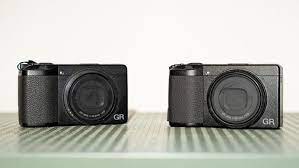
Both the Ricoh GR III and the Ricoh GR IIIx are excellent cameras in terms of usability, build quality and image quality. However, they have different strengths depending on your shooting preferences.
The Ricoh GR III is a great choice if you enjoy shooting wide-angle subjects. It offers a 28mm equivalent lens, making it well-suited for street photography and capturing a broader perspective. Additionally, it provides versatility with the option to use wide-angle converter lenses for even wider shots or crop factors of 35mm or 50mm for more standard focal lengths.
On the other hand, the Ricoh GR IIIx is better suited for street photography and portraits, thanks to its 28mm equivalent lens. It excels at capturing close-up shots with its 75mm crop factor, making it a compact option for those who prioritize shooting subjects from a distance.
Ultimately, your choice between the two cameras depends on your specific shooting needs and desired focal lengths. Both cameras are user-friendly and capable of delivering excellent results.
Ricoh GR digital iii vs Fujifilm x100v specs
The Fujifilm X100V and Ricoh GR Digital III both have LCD screens with a diagonal size of 3.00 inches. However, there is a difference in their screen features.
The Fujifilm X100V is equipped with a tilting screen, allowing you to adjust the angle of the screen. This feature provides flexibility when shooting from waist or over-the-head levels, making it easier to compose shots from different perspectives.
In contrast, the Ricoh GR Digital III has a fixed type screen, which lacks the ability to tilt or adjust its angle. This limitation means that shooting positions may be less flexible compared to the X100V.
While both cameras have the same screen size, the Fujifilm X100V offers the additional advantage of a tilting screen for enhanced shooting versatility, whereas the Ricoh GR Digital III has a fixed screen.
Sensor Comparison
The Fujifilm X100V is equipped with a 26.0MP APS-C (23.5 x 15.6 mm) sized BSI-CMOS sensor and is powered by the X-Processor Pro 4 processor. In contrast, the Ricoh GR Digital III features a 10.0MP 1/1.7-inch (7.44 x 5.58 mm) sized CCD sensor and is equipped with the GR Engine III processor.
Lens Specs Comparison
The Fujifilm X100V is equipped with a 35mm F2.0 prime lens, while the Ricoh GR Digital III features a 28mm F1.9 prime lens.
When comparing the size and weight of the Fujifilm X100V and Ricoh GR Digital III, there are notable differences. The Fujifilm X100V has external dimensions of approximately 128 x 75 x 53 mm (5.04 x 2.95 x 2.09 inches) and weighs around 478 g (1.05 pounds) including batteries. In contrast, the Ricoh GR Digital III has smaller external dimensions, measuring approximately 109 x 59 x 26 mm (4.29 x 2.32 x 1.02 inches), and is lighter, weighing about 208 g (0.46 pounds) including batteries.
Ricoh GR Digital iii vs iv
The Ricoh GR III belongs to the Large Sensor Compact class, while the Ricoh GR Digital III falls into the Small Sensor Compact class. The GR III was released in September 2018, while the GR Digital III was launched in July 2009.
When comparing the size and weight of the Ricoh GR III and Ricoh GR Digital III, there are slight differences. The Ricoh GR III has external dimensions of approximately 109 x 62 x 33 mm (4.29 x 2.44 x 1.3 inches) and weighs around 257 g (0.57 pounds) including batteries. On the other hand, the Ricoh GR Digital III has external dimensions of approximately 109 x 59 x 26 mm (4.29 x 2.32 x 1.02 inches) and weighs about 208 g (0.46 pounds) including batteries.
The Ricoh GR digital III is equipped with a 24.0MP APS-C (23.5 x 15.6 mm) sized CMOS sensor, while the Ricoh GR Digital III features a 10.0MP 1/1.7-inch (7.44 x 5.58 mm) sized CCD sensor. The GR III’s sensor offers a resolution advantage of 14MP over the GR Digital III, which can be beneficial for printing larger images or having more flexibility in cropping. However, it’s important to note that the maximum sensor resolution is not the sole factor in determining image resolving power. Other factors like lens quality, image processing, and pixel size also contribute to the final image quality.
Recap:
Ricoh has a line of cameras known as the GR Digital series, which includes models such as the Ricoh GR Digital III, II, IV, and the current 16MP GR with an APS-C sensor. It’s worth noting that the naming scheme can sometimes lead to confusion, as the original GR Digital (referred to as “GRD” for short) is often mistakenly associated with the current model during online searches.
These GR Digital cameras trace their lineage back to the GR1, a high-end point-and-shoot film camera introduced in 1996. The GR1 gained fame through the street photography work of renowned Japanese photographer Daido Moriyama, who extensively used the GR series cameras.
FAQs:
Does the Ricoh GR III have film simulations?
Read more:
- Best XT2 & Outdoor Blink Camera Settings
- Best Blink Security System: Blink XT 5 Camera System
- Top Blink Wireless Security Cameras: Blink xt2 vs Outdoor
- Best Blink Camera Outdoor by Blink for Home
- How to Use Blink Home Monitor App for PC & Window
- Amazon Blink Camera Review | Outdoor, Indoor & Mini
- Best Batteries For Blink Camera
- What is Google Intel Gemini Lake Chromebook: Best Deal
- How to Mount Blink Outdoor Camera: We’ll Show You How



